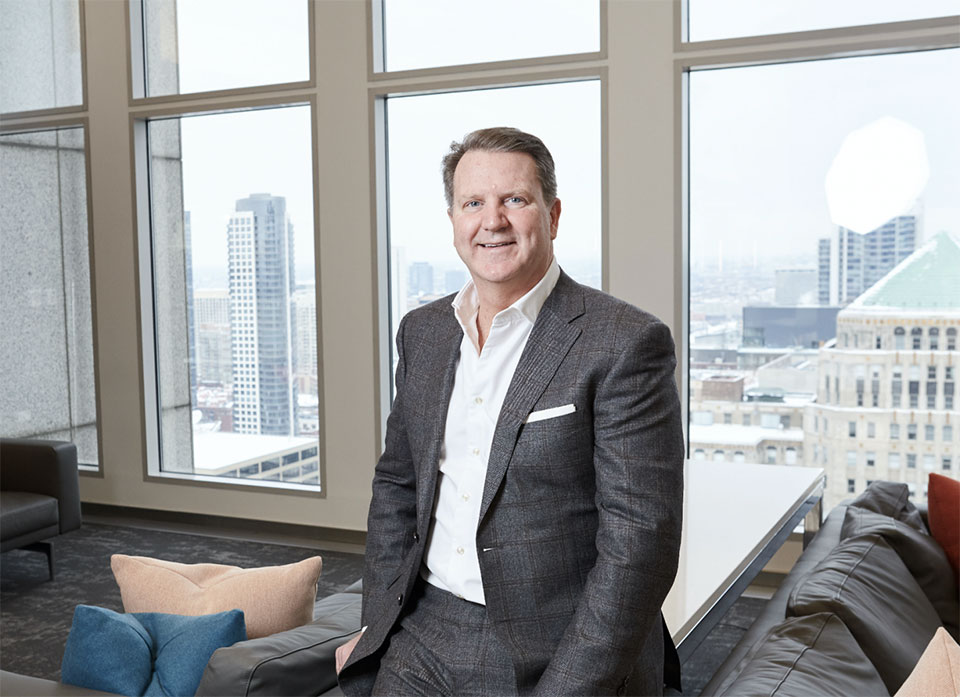Less Talk, More Workplace Change Needed to Keep Top Employees

Business leaders have touted a welcoming return to the office and new diversity, equity and inclusion programs. Now, they need to convert words to action with a better workplace experience – or risk losing their best employees. The reality of many of today’s workplaces is not cutting it for the modern worker: they’re finding a lack of flexibility, demotivating policies and workplace environments shaped by the need to separate rather than collaborate. And in this job market, employees have leverage. No wonder we are experiencing a Great Resignation.
While leaders weigh how to offer more flexibility, hybrid options and much-needed changes to workplace culture, management and physical spaces, delaying decisions about their physical workspaces is contributing to employees’ discontent. Trying to get it right, most office environments are changing at a pace that is best described as: too little, too late. Fortunately, it is possible to be thoughtful, strategic—and to also accelerate the needle of cultural change and retain your top performers.
Delayed decision-making: culture’s greatest risk
The events of 2020 and 2021 have forever changed employee expectations. They want more than platitudes about inclusive management and offices that are worth the commute. They want to walk into welcoming spaces that enhance productivity with areas for both privacy and interaction, as well as technology that meets the global, hybrid moment. And they want it now —not next year or the next. The power dynamic has shifted, you can’t entice employees back to an unchanged environment.
The current tight labor market gives high performers plenty of options. If their current employer can’t or won’t deliver a culture that supports them with flexibility, options of where to work, and empathy about their needs, they can find employers that will. According to the Microsoft’s Work Trends Index 41 percent of global employees say they’re likely to consider leaving their current employers within the next year.
CEOs must change their fundamental approach to creating an inclusive work experience—or risk losing their best and brightest. To do so, they must look closely at what professional workers want and design a human, authentic workplace where workers can express their natural personas.
A workplace immersed in purpose
When a leader listens with an honest intention to take action and make immediate change (even when hearing uncomfortable criticism), it’s amazing the insights that rise up. While every company has its quirks, some themes are universal.
More than anything, employees want to be part of something bigger than themselves, and they expect to be acknowledged as they contribute to that larger whole. A company’s culture and workplace—whether hybrid, remote or in-person—can enhance or detract from that mutually beneficial good feeling. Designing spaces that align with your mission shapes a workday immersed in purpose; making it easy to collaborate across locations and schedules eliminates frustration that can detract from that sense of purpose.
Most successful companies acknowledge the uncertainty in the world head-on, and provide culture, locations and technologies that support the ability for teams to get together in whatever manner makes sense on a given day.
Employee needs are different—and offices should meet multiple needs in the interest of top performance from each individual. Policies, culture and spaces must come together to help employees feel supported in their moments of need, whether that’s gathering a disparate team for urgent problem-solving in a tech-enabled conference room, or the need to work from an office when they can’t concentrate in home spaces that weren’t designed to be permanent offices.
Today’s high performers will not tolerate having to choose between their personal and professional obligations. The erosion of the line between home and business over the past 18 months has created challenges with managing stress and boundaries, creating connections with colleagues and mentors, and feeling present with family members and friends in your personal space.
It’s also worth emphasizing that there is no place for gender or racial bias in today’s offices. When professionals enter their company’s space for the first time—or for the first time since the pandemic began—they expect to feel welcome and included without an asterisk. Employers who seek the voices and value the contributions of employees of different races, cultures, genders and physical abilities are more successful – and even more profitable.
Rome wasn’t built in a day—but that was then, and this is now
To avoid employee cynicism, leaders must combat the perception that management is all talk and no walk. Show your commitment to diversity, equity and inclusion through real hiring change and retention work. Back up your desire to offer an inclusive, supportive workplace by transforming your office space into a commute-worthy setting (it’s not as expensive or time-consuming as you think). Workplaces that have natural and inviting spaces to gather, activities and areas that promote wellness, and the latest connective technology help employees look forward to sharing time and space with their colleagues and make collaboration natural and easy.
Most of all, don’t just talk—demonstrate that your flowery words are backed by real action. Reshape your culture, workplaces and technology stack to support the people who support your success. When you do, the results will blossom in your hallways, and on your bottom line.
Written by Steve Quick.
Have you read?
# Best CEOs In the World Of 2022.
# Best Citizenship and Residency by Investment Programs.
# These are the world’s most and least powerful passports, 2022.
# The World’s Richest People (Top 100 Billionaires, 2022).
# Case Study: Warren Buffett, LVMH’s Bernard Arnault, Apple’s Tim Cook, and Elon Musk.
Add CEOWORLD magazine to your Google News feed.
Follow CEOWORLD magazine headlines on: Google News, LinkedIn, Twitter, and Facebook.
This report/news/ranking/statistics has been prepared only for general guidance on matters of interest and does not constitute professional advice. You should not act upon the information contained in this publication without obtaining specific professional advice. No representation or warranty (express or implied) is given as to the accuracy or completeness of the information contained in this publication, and, to the extent permitted by law, CEOWORLD magazine does not accept or assume any liability, responsibility or duty of care for any consequences of you or anyone else acting, or refraining to act, in reliance on the information contained in this publication or for any decision based on it.
Copyright 2024 The CEOWORLD magazine. All rights reserved. This material (and any extract from it) must not be copied, redistributed or placed on any website, without CEOWORLD magazine' prior written consent. For media queries, please contact: info@ceoworld.biz
SUBSCRIBE NEWSLETTER








